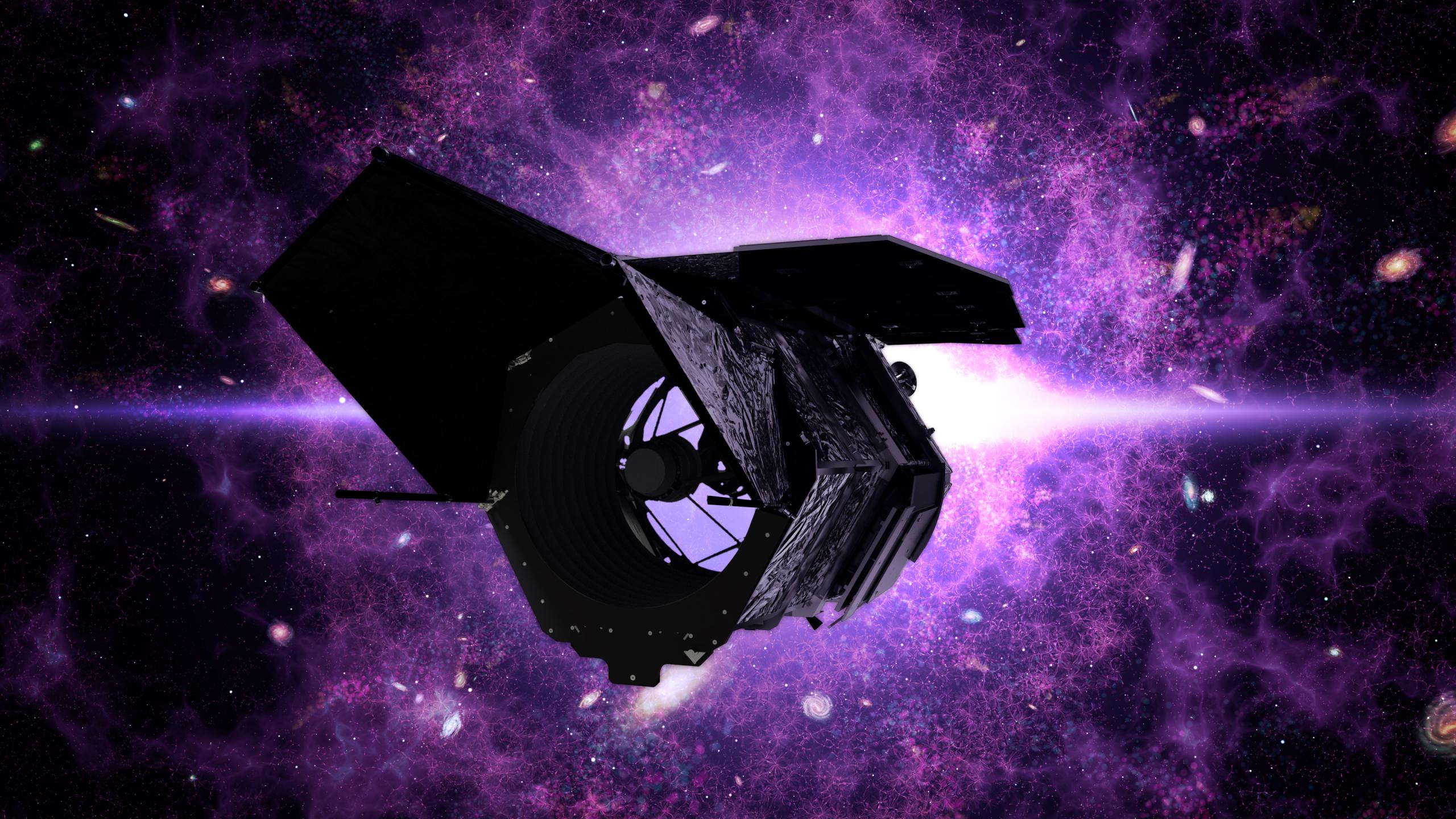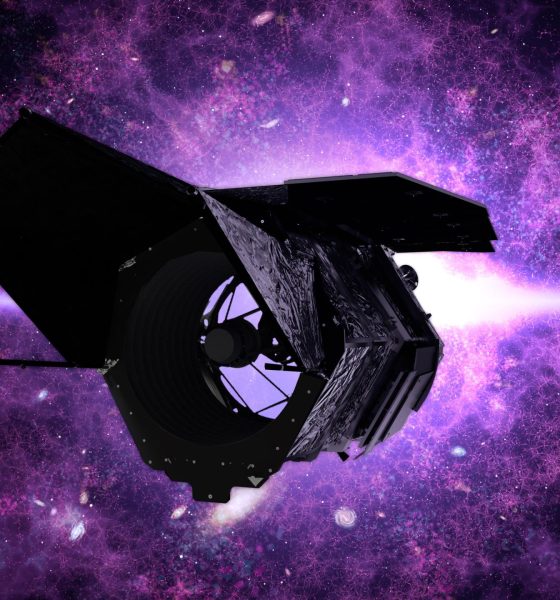

News
SpaceX Falcon Heavy rocket to launch NASA’s Roman Space Telescope
NASA has chosen SpaceX’s Falcon Heavy rocket to launch its next major space telescope, a wide-field observatory that should directly complement the brand new James Webb Space Telescope.
Originally known as the Wide Field InfraRed Survey Telescope (WFIRST), NASA recently renamed the mission in honor of Nancy Grace Roman, a foundational force behind the Hubble Space Telescope. Fittingly, the Roman Space Telescope’s basic design is reminiscent of Hubble in many ways, owing to the fact that the mission exists solely because the US National Reconnaissance Office (NRO) chose to donate an unused multi-billion-dollar spy satellite – a satellite that was effectively a secret Earth-facing version of Hubble.
However, thanks to decades of improvements in electronics, electromechanics, and the instrumentation side of spacecraft and space telescopes, RST will be dramatically more capable than the Hubble telescope it resembles. And now, after a several-year fight for survival, the Roman Space Telescope officially has a ride to space – SpaceX’s Falcon Heavy rocket.
Falcon Heavy continues to be a bit of a paradox, winning contract after contract for increasingly high-value flagship launches despite having not launched once in more than three years. It’s a bit of a self-fulfilling prophecy, at this point, as the major missions that are increasingly being entrusted to Falcon Heavy are far more likely to run into significant spacecraft-side delays. At one point in late 2021, for example, SpaceX had five Falcon Heavy launches tentatively planned in 2022 – all but one of which had already been delayed several months to a year or more. Seven months into 2022, not one of those missions has launched and it’s looking increasingly likely that Falcon Heavy will be lucky to fly at all this year.
Nonetheless, the Roman Space Telescope joins an impressive manifest that includes the multi-billion-dollar GOES-U weather satellite, NASA’s ~$5 billion Europa Clipper, two modules (HALO and PPE) of a Moon-orbiting space station, NASA’s Psyche asteroid explorer, a large Astrobotic Griffin lander carrying NASA’s VIPER Moon rover, two large geostationary communications satellites, and three missions for the US military. RST is the rocket’s 11th launch contract between now and the mid-2020s.
Despite having a similar resolving power, RST’s primary wide-field instrument will have a field of view 100 times greater than Hubble, meaning that the new telescope will be able to gather magnitudes more data in a similar time. Its primary goals include measuring “light from a billion galaxies over the course of the mission lifetime” and performing “a microlensing survey of the inner Milky Way to find ~2,600 exoplanets.” A second coronagraph instrument will “perform high-contrast imaging and spectroscopy of dozens of individual nearby exoplanets.” According to the Jet Propulsion Laboratory, “the Coronagraph provides a crucial stepping stone in the preparation of future missions aiming to [directly] image and characterize Earth-like planets [that are] 10 billion times fainter than their host star.”
According to NASA, “the telescope’s science program also includes dedicated investigations to tackle outstanding questions [about the nature and] effects of dark energy and dark matter, as well as a substantial general investigator program to enable further studies of astrophysical phenomena to advance other science goals.”
Because RST is also focused on infrared wavelengths of light, it could be an excellent companion to the James Webb Space Telescope (JWST). Whereas RST is a wide-field survey observatory that aims to observe and catalog billions of galaxies, stars, and planets, JWST’s far larger mirror is optimized for up-close observation of individual targets or deep gazes into tiny swaths of sky. RST could ultimately work a bit like an MRI or CAT scan to JWST’s biopsy, telling the surgeon where to look but only hinting at what it might find.
According to NASA, the ~$4.3 billion space telescope’s Falcon Heavy launch contract will cost an exceptionally steep $255 million to send the spacecraft to the Sun-Earth L2 Lagrange point about 800,000 kilometers (~500,000 mi) from Earth. NASA’s contract to launch the even more expensive Europa Clipper spacecraft all the way to Jupiter with a fully-expendable Falcon Heavy rocket is expected to cost less than $180 million.
NASA’s press release also claims that RST will be ready to launch as early as October 2026. A different press release from September 2021 did not mention the 2026 target and only noted that RST’s launch is scheduled no later than May 2027.

Elon Musk
Elon Musk and Tesla AI Director share insights after empty driver seat Robotaxi rides
The executives’ unoccupied tests hint at the rapid progress of Tesla’s unsupervised Robotaxi efforts.

Tesla CEO Elon Musk and AI Director Ashok Elluswamy celebrated Christmas Eve by sharing personal experiences with Robotaxi vehicles that had no safety monitor or occupant in the driver’s seat. Musk described the system’s “perfect driving” around Austin, while Elluswamy posted video from the back seat, calling it “an amazing experience.”
The executives’ unoccupied tests hint at the rapid progress of Tesla’s unsupervised Robotaxi efforts.
Elon and Ashok’s firsthand Robotaxi insights
Prior to Musk and the Tesla AI Director’s posts, sightings of unmanned Teslas navigating public roads were widely shared on social media. One such vehicle was spotted in Austin, Texas, which Elon Musk acknowleged by stating that “Testing is underway with no occupants in the car.”
Based on his Christmas Eve post, Musk seemed to have tested an unmanned Tesla himself. “A Tesla with no safety monitor in the car and me sitting in the passenger seat took me all around Austin on Sunday with perfect driving,” Musk wrote in his post.
Elluswamy responded with a 2-minute video showing himself in the rear of an unmanned Tesla. The video featured the vehicle’s empty front seats, as well as its smooth handling through real-world traffic. He captioned his video with the words, “It’s an amazing experience!”
Towards Unsupervised operations
During an xAI Hackathon earlier this month, Elon Musk mentioned that Tesla owed be removing Safety Monitors from its Robotaxis in Austin in just three weeks. “Unsupervised is pretty much solved at this point. So there will be Tesla Robotaxis operating in Austin with no one in them. Not even anyone in the passenger seat in about three weeks,” he said. Musk echoed similar estimates at the 2025 Annual Shareholder Meeting and the Q3 2025 earnings call.
Considering the insights that were posted Musk and Elluswamy, it does appear that Tesla is working hard towards operating its Robotaxis with no safety monitors. This is quite impressive considering that the service was launched just earlier this year.
Elon Musk
Starlink passes 9 million active customers just weeks after hitting 8 million
The milestone highlights the accelerating growth of Starlink, which has now been adding over 20,000 new users per day.

SpaceX’s Starlink satellite internet service has continued its rapid global expansion, surpassing 9 million active customers just weeks after crossing the 8 million mark.
The milestone highlights the accelerating growth of Starlink, which has now been adding over 20,000 new users per day.
9 million customers
In a post on X, SpaceX stated that Starlink now serves over 9 million active users across 155 countries, territories, and markets. The company reached 8 million customers in early November, meaning it added roughly 1 million subscribers in under seven weeks, or about 21,275 new users on average per day.
“Starlink is connecting more than 9M active customers with high-speed internet across 155 countries, territories, and many other markets,” Starlink wrote in a post on its official X account. SpaceX President Gwynne Shotwell also celebrated the milestone on X. “A huge thank you to all of our customers and congrats to the Starlink team for such an incredible product,” she wrote.
That growth rate reflects both rising demand for broadband in underserved regions and Starlink’s expanding satellite constellation, which now includes more than 9,000 low-Earth-orbit satellites designed to deliver high-speed, low-latency internet worldwide.
Starlink’s momentum
Starlink’s momentum has been building up. SpaceX reported 4.6 million Starlink customers in December 2024, followed by 7 million by August 2025, and 8 million customers in November. Independent data also suggests Starlink usage is rising sharply, with Cloudflare reporting that global web traffic from Starlink users more than doubled in 2025, as noted in an Insider report.
Starlink’s momentum is increasingly tied to SpaceX’s broader financial outlook. Elon Musk has said the satellite network is “by far” the company’s largest revenue driver, and reports suggest SpaceX may be positioning itself for an initial public offering as soon as next year, with valuations estimated as high as $1.5 trillion. Musk has also suggested in the past that Starlink could have its own IPO in the future.
News
NVIDIA Director of Robotics: Tesla FSD v14 is the first AI to pass the “Physical Turing Test”
After testing FSD v14, Fan stated that his experience with FSD felt magical at first, but it soon started to feel like a routine.

NVIDIA Director of Robotics Jim Fan has praised Tesla’s Full Self-Driving (Supervised) v14 as the first AI to pass what he described as a “Physical Turing Test.”
After testing FSD v14, Fan stated that his experience with FSD felt magical at first, but it soon started to feel like a routine. And just like smartphones today, removing it now would “actively hurt.”
Jim Fan’s hands-on FSD v14 impressions
Fan, a leading researcher in embodied AI who is currently solving Physical AI at NVIDIA and spearheading the company’s Project GR00T initiative, noted that he actually was late to the Tesla game. He was, however, one of the first to try out FSD v14.
“I was very late to own a Tesla but among the earliest to try out FSD v14. It’s perhaps the first time I experience an AI that passes the Physical Turing Test: after a long day at work, you press a button, lay back, and couldn’t tell if a neural net or a human drove you home,” Fan wrote in a post on X.
Fan added: “Despite knowing exactly how robot learning works, I still find it magical watching the steering wheel turn by itself. First it feels surreal, next it becomes routine. Then, like the smartphone, taking it away actively hurts. This is how humanity gets rewired and glued to god-like technologies.”
The Physical Turing Test
The original Turing Test was conceived by Alan Turing in 1950, and it was aimed at determining if a machine could exhibit behavior that is equivalent to or indistinguishable from a human. By focusing on text-based conversations, the original Turing Test set a high bar for natural language processing and machine learning.
This test has been passed by today’s large language models. However, the capability to converse in a humanlike manner is a completely different challenge from performing real-world problem-solving or physical interactions. Thus, Fan introduced the Physical Turing Test, which challenges AI systems to demonstrate intelligence through physical actions.
Based on Fan’s comments, Tesla has demonstrated these intelligent physical actions with FSD v14. Elon Musk agreed with the NVIDIA executive, stating in a post on X that with FSD v14, “you can sense the sentience maturing.” Musk also praised Tesla AI, calling it the best “real-world AI” today.








